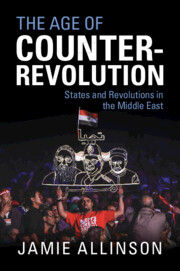Book contents
- The Age of Counter-Revolution
- The Age of Counter-Revolution
- Copyright page
- Dedication
- Contents
- Figures
- Acknowledgements
- A Note on Transliteration
- 1 Introduction
- 2 What Is Counter-Revolution?
- 3 The Revolutionary Situations
- 4 Political Revolutions and Counter-Revolutions
- 5 Militarising Counter-Revolution
- 6 From Revolution to State Collapse
- 7 Revolutionary States?
- 8 Conclusion
- Glossary
- Notes
- Bibliography
- Index
- References
Bibliography
Published online by Cambridge University Press: 06 May 2022
- The Age of Counter-Revolution
- The Age of Counter-Revolution
- Copyright page
- Dedication
- Contents
- Figures
- Acknowledgements
- A Note on Transliteration
- 1 Introduction
- 2 What Is Counter-Revolution?
- 3 The Revolutionary Situations
- 4 Political Revolutions and Counter-Revolutions
- 5 Militarising Counter-Revolution
- 6 From Revolution to State Collapse
- 7 Revolutionary States?
- 8 Conclusion
- Glossary
- Notes
- Bibliography
- Index
- References
- Type
- Chapter
- Information
- The Age of Counter-RevolutionStates and Revolutions in the Middle East, pp. 318 - 348Publisher: Cambridge University PressPrint publication year: 2022



